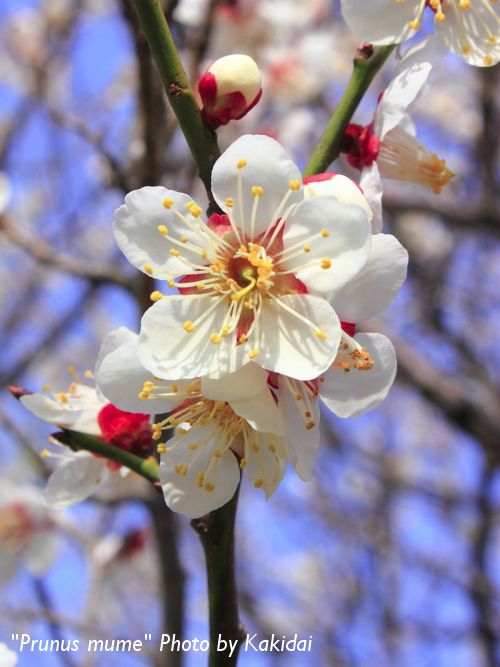
Prunus mume, an Asian tree species. Its common names include Chinese plum and Japanese apricot. The flower is usually called plum blossom. Although generally referred to as plum, it is more closely related to the apricot. The fruit of the tree is used in Chinese, Japanese and Korean cooking in juices, as a flavouring for alcohol, as a pickle and in sauces. It is also used in traditional medicine. The tree's flowering in late winter and early spring is highly regarded as a seasonal symbol.
Symbol of Winter, corresponding to the month of January. One of the "Three Friends of Winter". Emblem of beauty, purity and longevity, for it is believed that Laozi was born under its branches.
In modern China Prunus is the National Flower, its petals signifying the five peoples: Han, Manchu, Mongol, Mohammedan and Tibetan.
The "plum" in Chinese art is botanical Prunus mume or mei and more closely related to the Apricot then the Plum, and so rare in the West that it does not have any Western name.
Hawthorne is a traditional trade name on this decoration. The problem was at the turn of the 19th century, that this plant was indigenous to China and only related to western variants of Plum, so nobody really knew what to call it.
The botanically correct name is Prunus Mume. If we want to be be more precise I think a better name is 'plum blossom' or meihua in Chinese.
A